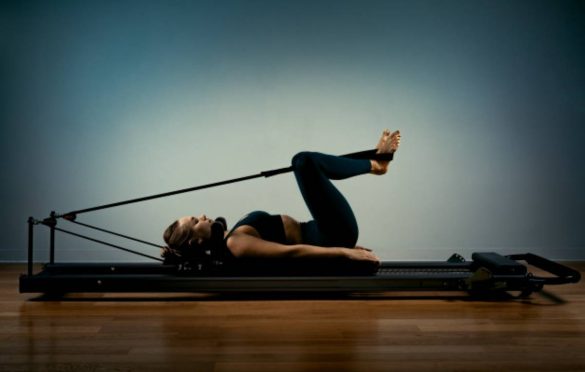What Is Hip Extension and How Does It Work?

Hip extension occurs when the hip joint is opened. When you raise the angle between the thigh and the front of the pelvis, which can begin with any degree of flexion, you extend your hip. In reality, you are in hip extension when you stand and also when your leg moves behind you. Athletes and exercisers generate power from hip extension during activities like running, jumping, swimming, and so on.
Table of Contents
Key Muscles
Walking, standing up, and stairs climbingall require a hip to support the pelvis and propel movement. Here’s a breakdown of the main players in hip extension.
Adductor Magnus
When the hip is flexed, the adductor Magnus is essential for hip extension. Its length varies depending on the hip angle.
Gluteus Group
The gluteus maximus is one of the body’s strongest muscles, and it’s in charge of moving the hips and thighs. Hip extension is also aid by the gluteus medius.
Group of Hamstrings
With a hip extension, such as when standing up from a squat, the hamstrings—long head (not short head) biceps femora’s, semimembranosus, and semitendinosus—support the gluts.
Why Are Hip Extension Exercises Necessary?
To maintain a neutral pelvis and provide a forceful and safe range of motion across the hip, the hip flexors and extensors must operate together. However, everyday hip exercises aren’t tough enough to maintain the gluts and hamstrings strong.
Furthermore, most workouts emphasize hip flexion rather than hip. Cycling is a good example (including indoor spinning). By bringing the leg behind the pelvis to facilitate hip opening, exercises that promote complete hip extension strengthen the primary muscles involved in this functional action. The hip and back extensors are both worked in the swimming Pilates mat exercise, for example.
Pilates Hip Extension Exercises
Pilates emphasizes full-body awareness and healthy musculature in an integrated approach to training. Pilate’s hip exercises focus on the correct form to develop and stabilize the hip flexors.
The inclination to tilt the pelvis forward anterior tilt during numerous hip exercises is a typical error that worsens the curvature of the lumbar spine and puts a lot of pressure on the back. The Pilates approach aids practitioners in maintaining proper alignment.
Pilate’s movements strengthen the gluts and hamstrings while challenging the core by using resistance from training equipment, body weight, or gravity. To strengthen the muscles that support your hip extensors, try these Pilates movements.
Cycling
This intermediate-level workout, often known as “high bicycle,” works the legs and buttocks, as well as the shoulders, arms, and core.
Exercising to tighten the buttocks
Pilates pelvic curls, heel beats, mat swimming, quadruped leg kick back, and double leg kick are all glutei-strengthening exercises.
Front leg pull
The hamstrings, glutes, quadriceps, groins, abdominals, shoulders, and arms are all strengthened by this full-body exercise. It also helps to keep the shoulders and trunk in place.
Front and rear side kick series
Sidekicks in Pilates work the hips and thighs. They also include the glutes, low back, and pelvic floor, which are known as “powerhouse” core muscles.
After you’ve mastered the fundamentals, you can on to more complex Pilates exercises to improve your hip extension. Some of the exercises require both upper body flexion and it, which puts your coordination to the test and improves your awareness of your entire body.


